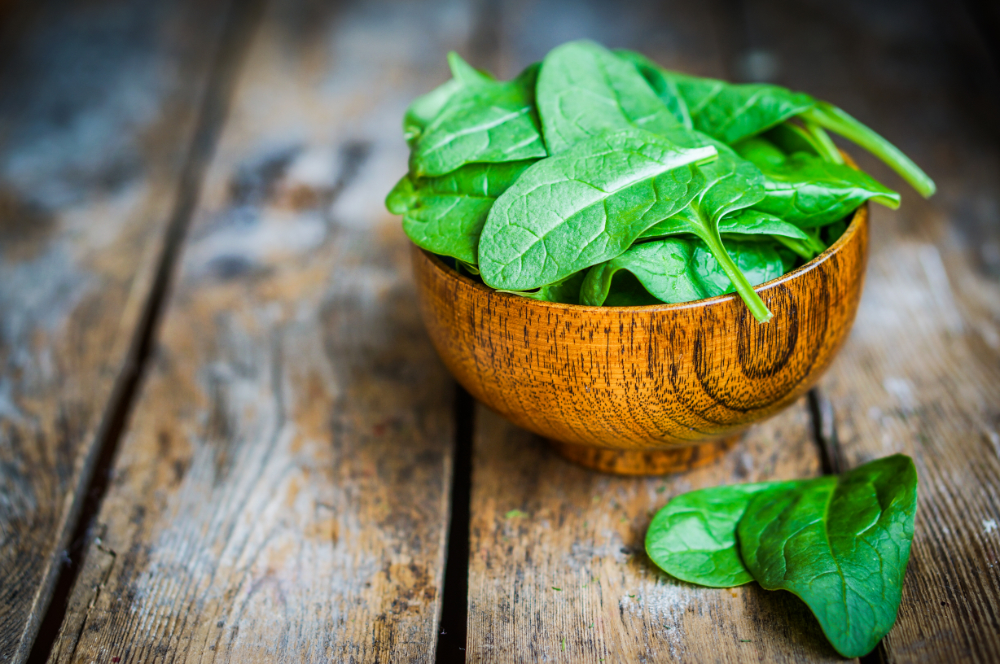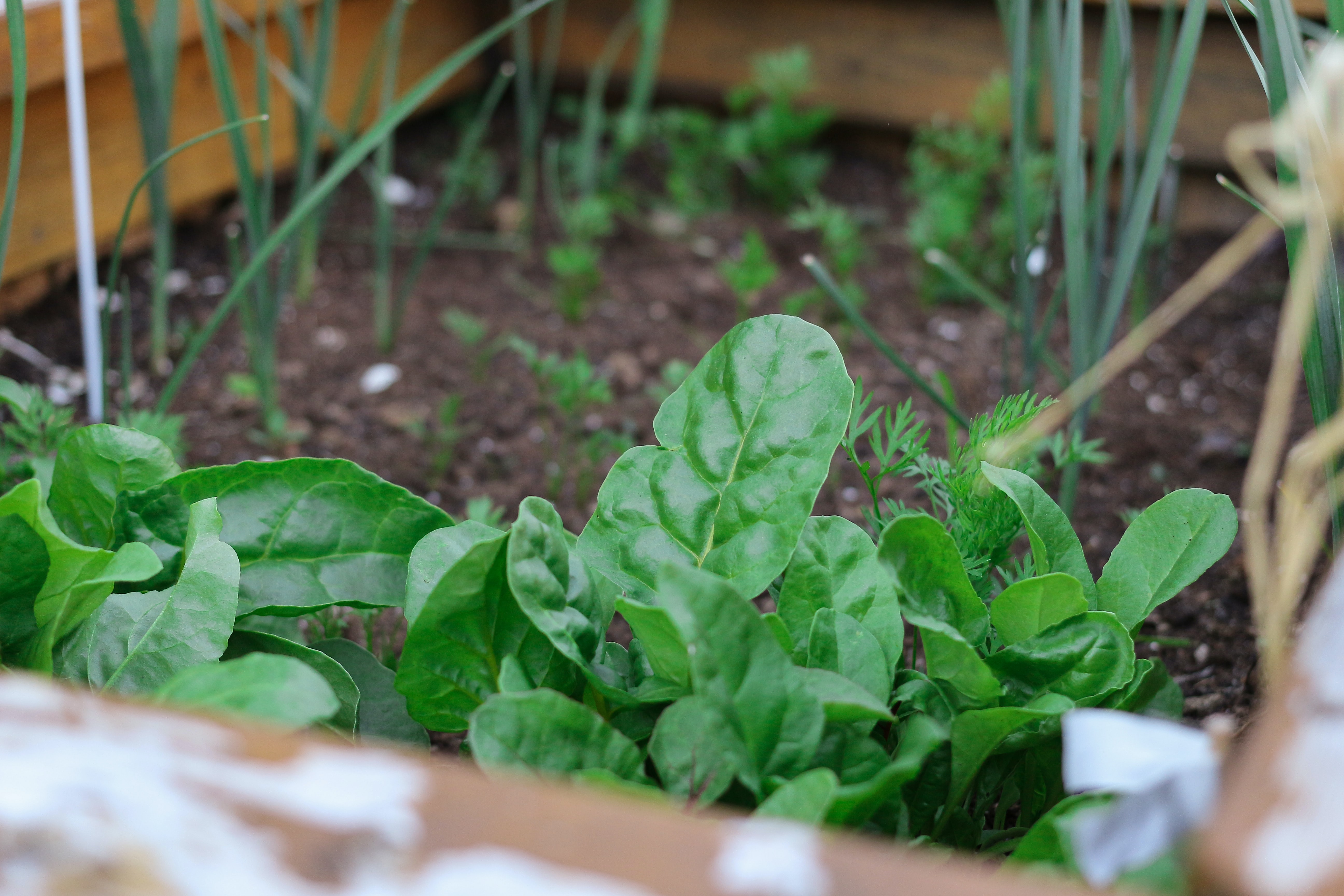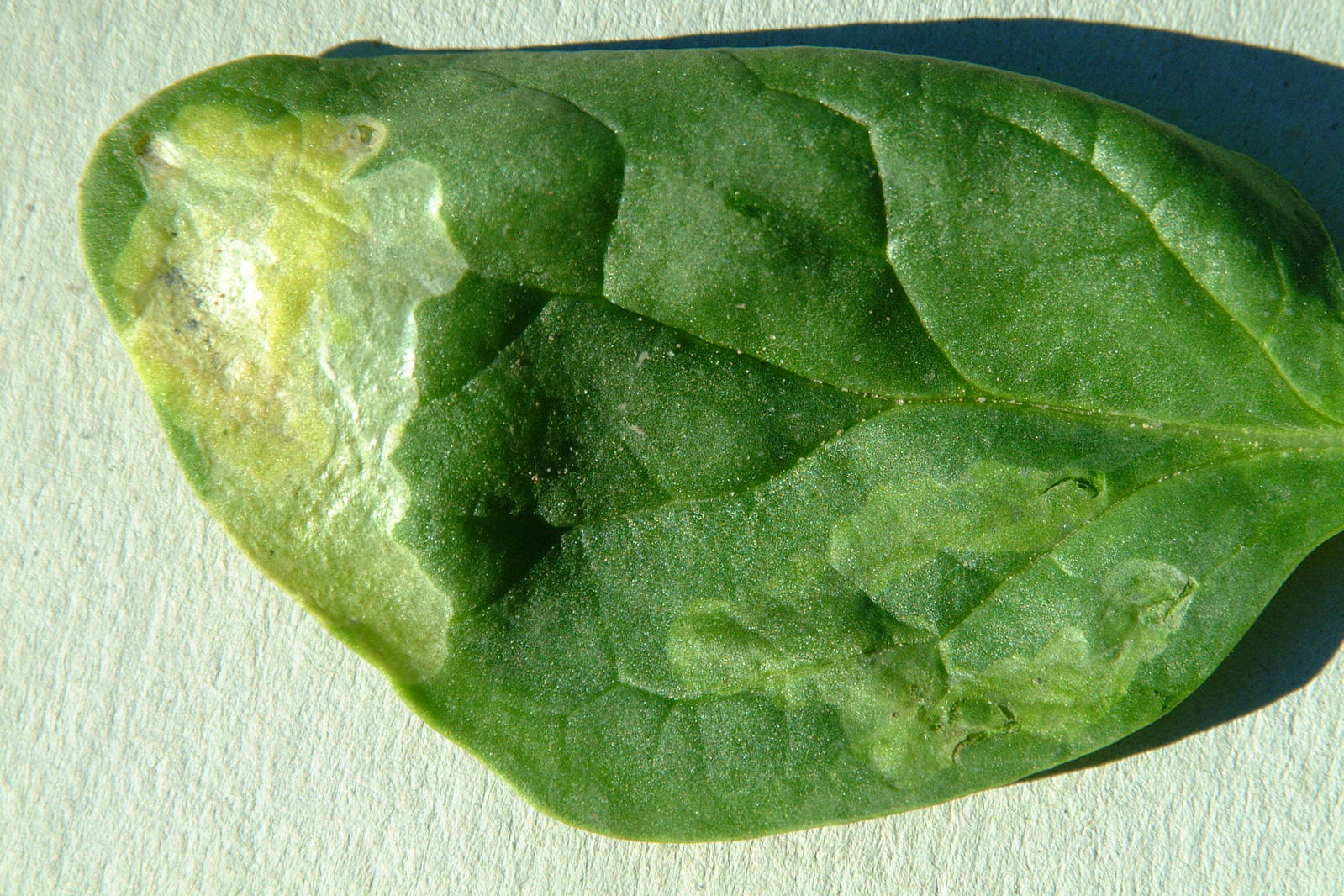
Growing and planting spinach: From sowing to harvesting
Spinach is one of the easiest and fastest growing garden crops. Harvesting can begin within a few weeks of sowing. It can be harvested continuously over a period of several weeks - until late into the fall and winter. But spinach is not only a real wonder in the garden: it is also versatile, delicious and super healthy in the kitchen. Find out how you can easily grow it yourself in this article.
This Article Contains:
- Growing spinach: everything you need to know
- Companion plants for spinach: succession cropping & companion plants
- Spinach as a green manure and pre-crop
- Sowing spinach: when is the best time?
- Spinach varieties: summer and winter spinach
- Proper care of spinach plants
- Diseases & pests of spinach
- Harvest time: harvesting, storing and processing spinach
- Frequently asked questions about growing spinach
Quick Overview
Growing spinach: An overview
- Location: sunny - semi-shady, loose soil, medium nutrient content
- Mixed cultivation: compatible with almost everything except other foxtail plants.
- Succession cropping: Good pre-crop for most plants except foxtails, therefore also suitable as green manure.
- Cultivation period: Sowing February - April for harvest until June, then again August - October for harvest in fall and winter
- Sowing: approx. 1 cm/ 0,4 in deep with 3 cm/ 1,2 in spacing in the row and 10 - 15 cm/ 3,9 - 5,9 in between the rows. Later, thin out to 5 - 10 cm/ 2 - 3,9 in spacing.
- Care: uniform moisture when sowing and weeding until the end of cultivation. Do not fertilize additionally.
- Diseases and pests: occasional downy mildew, slugs and beetroot fly
Growing spinach: everything you need to know
Botanically, spinach belongs to the amaranth family (Amaranthaceae), which also includes amaranth, beetroot and chard. It probably originates from the Near East and was brought to Spain by the Moors in the ninth century, from where it spread throughout Central Europe as a cultivated plant.
The right location
Spinach is generally quite undemanding. It thrives well in most soils as long as they are reasonably loose and there are still medium amounts of nutrients - for example, in the second year of a four-year crop rotation. Spinach likes the sun, but also thrives in partial shade. The only thing that hinders its growth is too much wind and severe drought.
Companion plants for spinach: succession cropping & companion plants
| Good neighbors | Bad neighbors | |
|---|---|---|
| Aubergine | Oregano | Beetroot |
| Beans and soy beans | Pak Choi | Chard |
| Broccoli and cauliflower | Pea | Lovage |
| Brussels sprouts | Physalis | Jerusalem artichokes |
| Celery | Potato | |
| Chinese cabbage | Postelein | |
| Chives | Radish and Radishes | |
| Head cabbage | Rhubarb | |
| Kohlrabi | Salsify | |
| Leafy cabbage (green and palm cabbage) | Strawberry | |
| Lettuce | Tarragon | |
| Marigold | Turnip |

Spinach as a green manure and pre-crop
As spinach gets on very well with many plants, it is an excellent partner for mixed crops. For this reason and due to its short growth period, it is also ideal as a pre-crop, catch crop or post-crop. Spinach can also be used as a green manure, as it mobilizes many nutrients from the soil. If it is simply left on the bed after harvesting, it is quickly broken down by soil life and the nutrients become available again for other plants. The large root depth of over 30 cm/ 11,8 in also makes spinach ideal as a green manure or pre-crop. The roots remain in the soil after harvesting and are converted into humus within a few days. Where the roots were before, loose channels are created through which air and water can circulate in the soil. This leaves the spinach with an optimal soil structure - another plus point for spinach as a crop rotation element. You should only be careful with other foxtail plants, such as beetrot , chard and the spinach itself. You should not grow these directly next to the spinach or afterwards on the same area, but rather take a cultivation break of 3 years.
Sowing spinach: when is the best time?
As spinach is a long-day plant and begins to flower in early summer, it should be sown directly into the open ground early for spring cultivation. This is because once the spinach has flowered, it is no longer edible. Between the end of February and the beginning of Aprilis therefore the right time to sow spinach for spring cultivation. From the beginning of June, you should no longer eat spinach, as it contains a lot of oxalic acid from this point onwards - similar to rhubarb. This not only causes a furry feeling on the tongue, but can also lead to calcium metabolism disorders and, in the worst case, cause kidney stones. The fact that spinach is not suitable for summer cultivation is not at all a bad thing, as it tolerates cold without any problems. Under a fleece, it can survive on the bed well into winter and even continue to grow. For fall and winter cultivation, you can sow spinach between August and the beginning of October, when the days get shorter again.

Spinach varieties: summer and winter spinach
There are also countless varieties of spinach with different characteristics. Some are better suited to growing in spring to early summer (summer spinach), others are hardy and can be grown until December (winter spinach). Below we have selected three varieties for you as examples, each of which is suitable for different cultivation periods:
- Monnopa is a very hardy variety that grows quickly and produces round, dark green leaves. It is suitable for spring, fall and winter cultivation - a real all-rounder.
- Butterflay forms oval, light green leaves and shoots late. This variety is suitable for spring and fall cultivation - the early summer specialist.
- Verdil grows very quickly and forms strong rosettes of leaves. It is particularly suitable for fall and overwintering cultivation, but only to a limited extent for spring cultivation - the Ice Queen.
As you can see, different spinach varieties have different optimal growing periods. Therefore, when choosing a variety, think about when you plan to plant the spinach in your bed and which variety best meets the corresponding requirements for frost hardiness, growth speed or bolt resistance.

Learn more about the varieties
In our library you will find information on the individual varieties with cultivation periods, tips on planting and harvesting. You will also find good and bad neighbours to help you plan a mixed crop.
View library nowProper care of spinach plants
Spinach is one of the easiest crops to care for. Additional fertilization, apart from a small optional compost application before sowing, is not necessary. In fact, too much fertilizer should be avoided at all costs, as spinach tends to store nitrate in the leaves. You can find out more about organic fertilization here. This nutrient, which is essential for plants, is suspected of being harmful to human health. It is therefore sufficient to water the spinach regularly and to weed between the rows until the end of cultivation (this is the time when the plants have closed the rows with their leaves). You should pay particular attention to even moisture until germination, but even after that, spinach is happy to have moist soil.
Diseases & pests of spinach
With proper care and a suitable location, spinach is very robust and usually has no problems with pests or diseases.

In particularly damp weather, spinach can occasionally be affected by downy mildew. To prevent this, you should avoid getting the leaves wet when watering in the evening. Water either in the morning or in such a way that the plants do not get wet. Snails can also become a problem for young plants. Small circles of sand around the plants provide limited protection against snails in dry conditions. However, the only really effective method is to continuously collect the unloved slugs. This is best done in the evening, about an hour after it has become dark. Last but not least, beetroot flies can sometimes be a problem. If you find traces on your spinach plants as shown in the picture below, you should remove the infested leaves and dispose of them in the residual waste.
Harvest time: harvesting, storing and processing spinach

When the leaves are between 5 and 10 cm/ 2 - 3,9 in tall, you can start harvesting the spinach. Simply pick the largest leaves from each plant and leave the smaller ones. This way you can enjoy fresh spinach every few days. Only harvest as much as you can use straight away, because once harvested, the tender leaves do not keep for long. It is therefore best to use them immediately to make a tasty salad (young and tender leaves, so-called "baby leaf" spinach, are particularly suitable for this), classic creamed spinach, in a vegetable casserole or another dish of your choice - spinach actually goes with everything.
If you have too much at once, you can easily freeze some varieties and keep them for a few weeks. However, find out beforehand whether the variety you are growing is suitable for this.
We hope you now have all the information you need to successfully grow spinach yourself. If you still have any questions or suggestions, simply send us an e-mail to [email protected].
Want to get helpful gardening tips all year round and plan your own beds in the best possible way? Then register here or download the Fryd app for Android or iOS.
Fryd - Your digital bed planner

Jonas
Jonas studied agricultural biology. He discovered his passion for plants and gardening through an internship at a permaculture NGO. Since then, he has been gardening on his balcony and in community gardens.
Learn MoreCurrent Topics in the Community

Liked 1 times
💚🦋🐜🐌🐛🐞🐝🌻🦋💚
Hi, I'm currently creating a plan and have noticed that I can't enter my plants as dead/harvested on my pc/notebook, I can only delete them. Is that the case or am I just too blind to find it? Thanks for your feedback and a happy new year ^^


Liked 7 times
My homemade beeswax candles made from my own beeswax Now the problem is that I can no longer reach my vegetables - even the digging fork is frozen solid - I can only harvest Brussels sprouts and kale
Popular Articles

Overwintering Parsley: How to Do It Successfully

How to Grow Lettuce in Winter: Varieties, Sowing, Harvesting

Growing Sage Plant: Tips for Sowing and Harvesting

What Herbs Can Be Planted Together?

Create & Design a Permaculture Garden

Overwintering Plants: Tubs, Pots and Raised Beds

Pruning, Fertilizing & Propagating Currants: Care Tips

Pruning Raspberries: How to Do It

Vegetable Garden With Greenhouse: How to Use Greenhouse Effect

Winterizing Beds and the Garden: How to Do It
FAQ
Is spinach suitable as a pre-crop or green manure?
Spinach is a good pre-crop as it grows quickly and prepares the soil for subsequent plants. Spinach can also be used as a green manure, contributing to soil improvement and structure.
When is the best time to sow spinach?
End of February to beginning of April for spring cultivation and August to beginning of October for fall and winter cultivation.
Which spinach varieties are suitable for which growing period?
Monnopa' for spring, fall and winter; 'Butterflay' for spring and fall; 'Verdil' mainly for fall and overwintering.
What diseases and pests can occur in spinach?
Downy mildew and slugs are potential problems; prevention through appropriate watering techniques and slug control.
How to harvest spinach so it keeps growing?
Harvesting begins when the leaves are 5-10 cm/ 2-3,9 in in size by picking the largest leaves and leaving the smaller ones.